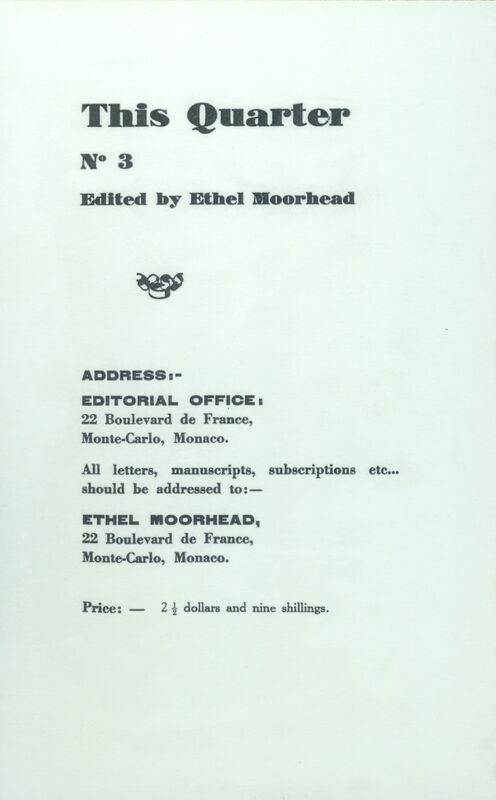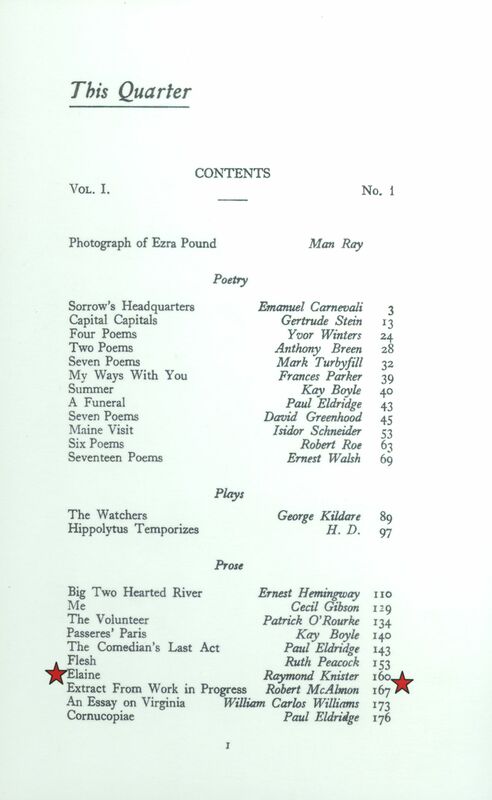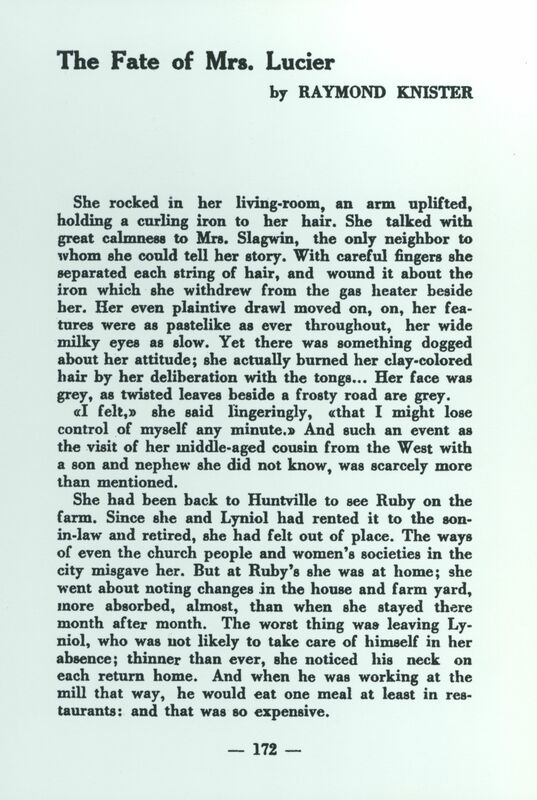Raymond Knister in This Quarter
An essay looking at Knister’s place among the contemporary writers of his time through his publications in This Quarter. Written for the original exhibit based on an essay by Matt Carrington and Karen Herzog.
Figure 1, Title Page of This Quarter, No. 3: This Quarter, a Paris-based little magazine published between 1925 and 1932, included the work of many literary greats including Ernest Hemingway, Ezra Pound, Gertrude Stein, and James Joyce, among many others. Such a significant repertoire of writers shows This Quarter’s involvement with the literary circle of its day; This Quarter published well-known artists and provided a solid foundation for emerging artists.
Figure 2, Dedication to Ezra Pound: Hand-written dedication by Ernest Walsh to Ezra Pound, in the first issue of This Quarter, a Paris-based little magazine. This publication was started and initially edited by Walsh, who was impressed with the writing of today’s well-known poets, such as Ezra Pound.
Figure 3, Table of Contents of This Quarter, No. 3: Raymond Knister’s publication of poetry and prose in This Quarter alongside literary cultural giants such as Ernest Hemingway and Gertrude Stein deserves much praise. The cultural prominence of these other writers suggest the high value of Knister’s work itself.
Knister’s style situated him within progressive literary movements of his time. “The Fate of Mrs. Lucier” (vol. 1 no. 2) resonated with Modernism, for example, through excessive and innovative use of ellipses, thus suggesting narrative and cognitive fragmentation. Knister’s “Elaine” (vol.1 no.1) reflects his rural farm settling as one character “stood at the door of the little coop-like waiting room”. Such Modern ingredients mixed with Knister’s rural life create the appeal that may have drawn Walsh (the editor of This Quarter to Knister’s poetry.)
A significant element to both of Knister’s stories published in This Quarter is the movement from rural to urban. In “Elaine” Knister shows this transition through “[t]he fields [that] had given way to dusty houses, cold pavement, shivering maples” (vol. 1 no. 1, 165, emphasis added). This movement out of the rural also appears in “The Fate of Mrs. Lucier” as Knister describes a “waiting-room...echoing after her habitude of tiny cluttered farmhouses.” (vol. 1 no.2, 173).





